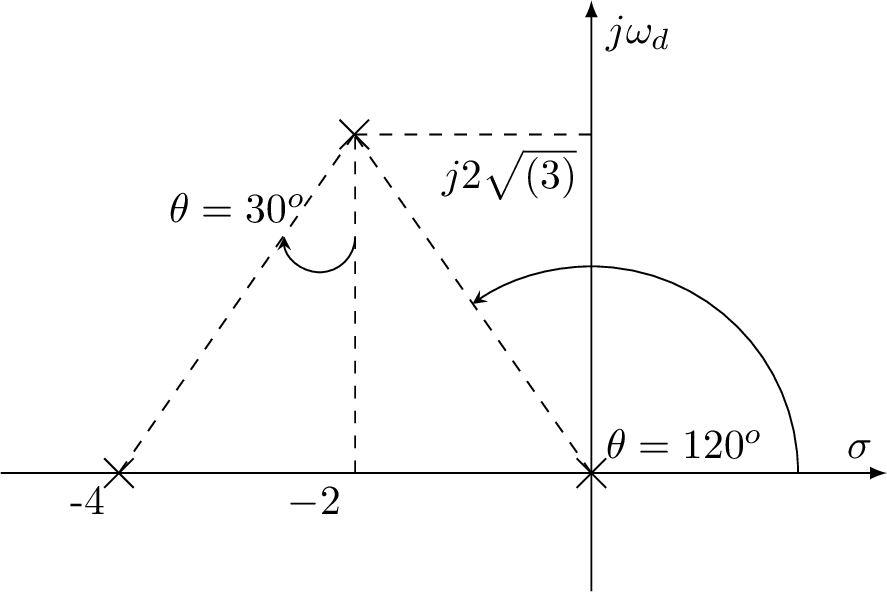Description
The code above is a LaTeX document that generates a standalone TikZ picture. The TikZ package is used to draw a plot with axes representing the real part of a complex number () and the imaginary part of a complex number () in the complex plane.
The code draws the axes and marks the origin with a cross-out circle. It also draws dashed lines representing the angle from the positive axis, and another dashed line representing the angle from the positive axis. The code also marks several points on the plot, including a point at (0,0), a point at , a point at , and a point at -4,0).
Overall, the code is generating a visual representation of a complex number system and illustrating the locations of certain points and angles within that system.
Keywords
tikz, shapes.misc, draw, node, dashed, solid, cross out, fill, black, -latex, -stealth.
Source Code

\documentclass{standalone}
\usepackage{tikz}
\usetikzlibrary{shapes.misc}
\begin{document}
\begin{tikzpicture}
% Axes:
\draw [-latex] (-5,0) -- (2.5,0) node [above left] {$\sigma$};
\draw [-latex] (0,-1) -- (0,4) node [below right] {$j\omega_d$};
\node[cross out,draw=black] at (0,0) {};
\draw[dashed] (0,0) -- (125:3.5) node[solid, cross out,draw=black] {};
\draw[black, -stealth] (1.75,0) node[pos=0.1,above right] {$\theta=120^o$} arc (0:125:1.75);
\draw[dashed] (-2,0) node[below left] {$-2$} -- (-2,2.867);
\draw[dashed] (0,2.867) node[below left] {$j2\sqrt{(3)}$} -- (-2,2.867);
\draw[dashed] (125:3.5) -- (-4,0) node[solid, cross out,draw=black] {};
\draw (-4,0) node [below left] {-4};
\draw[black, -stealth] (-2,2) arc (0:-180:0.3);
\draw (-3,2.25)node[] {$\theta=30^o$};
\end{tikzpicture}
\end{document}